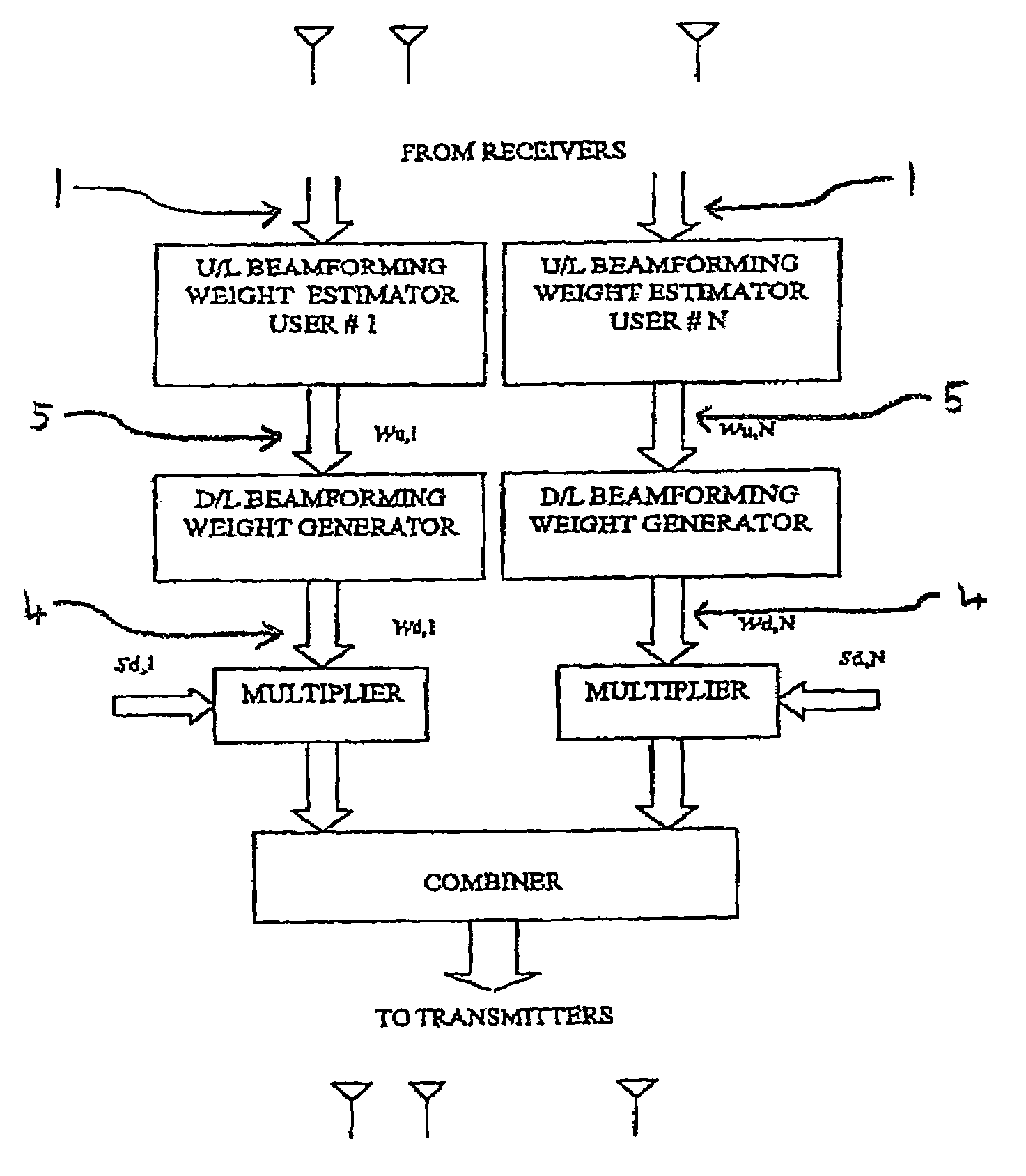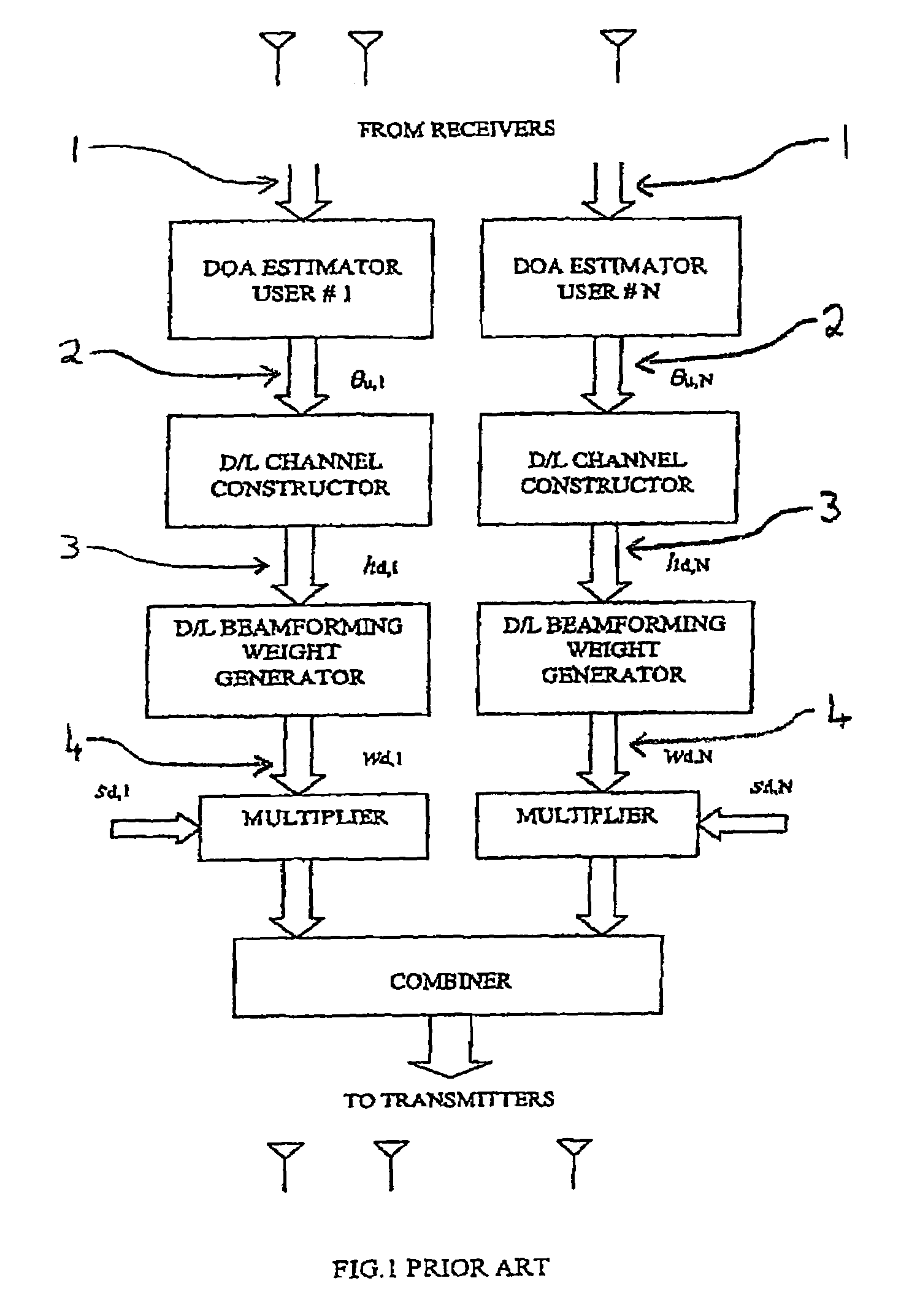Beam synthesis method for downlink beamforming in FDD wireless communication system
a wireless communication system and beam synthesis technology, applied in the field of wireless communication systems, can solve the problems of null-wrapping phenomenon, degrade the performance and capacity of downlink, and degrade the performance of the whole system, and achieve the effect of convenient, inexpensive and efficien
- Summary
- Abstract
- Description
- Claims
- Application Information
AI Technical Summary
Benefits of technology
Problems solved by technology
Method used
Image
Examples
Embodiment Construction
[0061]FIG. 1 shows the block diagram of a downlink beamforming scheme according to prior art for improving downlink performance and capacity using base station antenna array. A plurality of mobile users share the same channels which can be a time slot for TDMA, a frequency band for FDMA or a set of spreading codes for CDMA. Using a plurality of transceivers, higher system capacity and better transmission performance can be achieved if proper uplink and downlink beamforming schemes are employed.
[0062]The prior art systems first estimate each user's DOA values 2 from the received uplink signals 1, then construct the downlink channel responses (DCRs) 3 using downlink steering vectors for the estimated DOAs. Finally, the DCRs are set as the downlink beamforming vectors 4. As discussed in the first section of this application, the prior art system is very complicated in the sense that all users' DOAs are to be estimated; also, this system cannot provide enough downlink capacity to match ...
PUM
 Login to View More
Login to View More Abstract
Description
Claims
Application Information
 Login to View More
Login to View More - R&D
- Intellectual Property
- Life Sciences
- Materials
- Tech Scout
- Unparalleled Data Quality
- Higher Quality Content
- 60% Fewer Hallucinations
Browse by: Latest US Patents, China's latest patents, Technical Efficacy Thesaurus, Application Domain, Technology Topic, Popular Technical Reports.
© 2025 PatSnap. All rights reserved.Legal|Privacy policy|Modern Slavery Act Transparency Statement|Sitemap|About US| Contact US: help@patsnap.com



